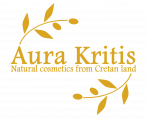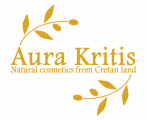3 STEP GUIDE FOR EVALUATING THE QUALITY OF COSMETIC PRODUCTS
Shampoo, hand soap, tooth paste and deodorant, are just a few of the skin care products that we all use in our everyday life.
Unfortunately, behind the shiny attractive label often is hidden a product containing potentially undesired substances, ethically not approved ingredients or even harmful chemicals, many of which have been accused of causing hormonal disorder, degenerative diseases and carcinogenesis
According to scientific evidence, systematic long-term contact with hazardous ingredients can lead to biodegradation in human tissues and gradual disruption of their normal functionality. Therefore, health issues are generated such as premature aging, skin problems and even more severe health disorders, such as tumor formation.
Especially young children are multiply exposed to dangerous chemicals, as tissue and organ formation processes take place in their bodies and the rate of substance absorption is increased.
Thus, irreversible damage can be provoked, as they ran the risk of future physical and mental development difficulties or even reproductive disabilities.
Especially during pregnancy, the mother should choose skin care products with extreme prudency.
Embryos are directly affected by mother’s habits, regarding food that she consumes, drinks, even products applying on skin epidermis.
Health concerns for embryos include endocrine disruption and obstruction of normal fetus development.
Thus, it is of great importance that every consumer can evaluate whether a cosmetic product is of good quality or loaded with toxic chemicals used by the industries, sacrificing human health on the altar of profit.
Aura Kritis wishes to raise awareness towards the quality evaluation of skin care products by consumers, according to the ingredients contained in the formulation. Our experts share their tips for the successful understanding of the ingredient list behind every cosmetic product.

STEP 1: HOW TO READ COSMETIC INGREDIENT LISTSο: ΠΩΣ ΝΑ ΔΙΑΒΑΖΕΤΕ ΤΑ ΟΝΟΜΑΤΑ ΤΩΝ ΣΥΣΤΑΤΙΚΩΝ
There is only one way to truly know if the cosmetic products that you are using are safe for human health; by reading and understanding the ingredient list. Unfortunately, names of ingredients appearing on cosmetic labels are sometime confusing and even frightening.
Written in such a difficult language, consumer often feels confused and gives up, believing that the list of ingredients can only be read by Chemists. That’s not true!
The founder of Aura Kritis, Chemist and awarded by the Association of Greek Chemists for graduating top of her class, shares her personal experience:
“After completing my Chemistry education, I tried to evaluate the ingredient list on the label of my favorite body lotion and I have to admit, I completely failed!"
“I had never seen these ingredient names, not even once during the 4 years training as a Chemist!”
"When specializing afterwards on Pharmaceutical Cosmetology, I found out the truth. Naming of cosmetic ingredients follows specific rules, in order to be international recognized and help in identifying cosmetic ingredients worldwide."
This is the so called INCI nomenclature (International Nomenclature for Cosmetic Ingredients).
Thus, every single ingredient used in cosmetic products is characterized by a systematic name, which can be researched in order to lead the consumer to all the relevant information on safety, action and functionality.
Οι πληροφορίες αυτές είναι δημόσια προσβάσιμες και οι καταναλωτές ενθαρρύνονται να διενεργούν αναζητήσεις για κάθε συστατικό του ενδιαφέροντός τους. Αν παρόλα αυτά συναντήσετε δυσκολία στην εύρεση πληροφοριών για κάποιο αμφιλεγόμενο συστατικό, οι ειδικοί της Αύρας Κρήτης θα χαρούν να σας βοηθήσουν.
In conclusion, Aura Kritis advises:
Tip #1: Although INCI names seem confusing, they are not meant to be read by a few people; quite the opposite! INCI nomenclature is a naming system aiming to a worldwide identification of the ingredients. Consumer is empowered to investigate the ingredients of interest, an action that will help in better understanding of safety and effectiveness aspects.

STEP 2: HOW TO SPOT HARMFUL CHEMICALS AMONG OTHER INGREDIENTSο: ΠΩΣ ΝΑ ΑΝΑΓΝΩΡΙΖΕΤΕ ΤΑ ΕΠΙΚΙΝΔΥΝΑ ΧΗΜΙΚΑ ΣΤΗ ΛΙΣΤΑ ΤΩΝ ΣΥΣΤΑΤΙΚΩΝ
Overcoming the initial confusion caused by the difficult naming of the ingredients listed on cosmetic labels, we are now called upon to face the second hurdle: how to spot the harmful ingredients among the rest?
There is a general phrase claiming that “If you can’t pronounce its name, then is bad for you”. But this is not always right.
We explain why, through an example. This is the ingredient list of the Night Repair Elixir, made by Aura Kritis:
| Prunus Amygdalus Dulcis (Sweet Almond) Oil, Caprylic/Capric Triglyceride, Vitis Vinifera (Grape) Seed Oil, Olea Europaea (Olive) Fruit Oil, Persea Gratissima (Avocado) Oil, Tocopheryl Acetate, Parfum |
Even though most of the above ingredients contain two-word names and rather confusing ones, this is actually a facial oil formulation with 100% vegetable origin oils!.
So, let us have a closer look.
Prunus Amygdalus Dulcis: Plant ingredients are usually called by the Latin name of the plant. For instance, almond oil appears on cosmetic ingredient list Prunus Amygdalus Dulcis, as it can be found in Latin names indexes.
Caprylic/Capric Triglyceride: A commonly used ingredient in cosmetic products, with a multiple word name that sounds chemical, is Caprylic/Capric Triglyceride.
This ingredient simply refers to fractionated Coconut Oil, obtained through a process that enables it to retain the liquid form even under 24 oC, in which coconut oil is normally solid.
Tocopheryl Acetate: Vitamin C, INCI name refers to an ingredient most favored in skin care products, as it simple stands for Vitamin E, known for its exceptional antioxidant properties – a natural and healthy way to prevent oils from oxidizing and protect skin from free radicals.
As it is notable, behind frustrating INCI names is concealed a pure and 100% natural origin oil formulation.
Από την άλλη μεριά, το πιο χαρακτηριστικό παράδειγμα βλαβερών ουσιών είναι τα parabens.
A most representing example is the case of parabens.
Numerous studies have reported that parabens can mimic estrogen structure and thus, lead to severe disruption of hormone functionality. Adverse effects on human health include the increased proliferation of breast cells and the subsequently caused carcinogenesis and disorders of the reproductive system.
Can you notice the difference?
Paraben: small word, pleasant to listen
Tocopheryl Acetate: two-word name, sounds more like a suspicious chemical
And yet, parabens are associated with tremendous health concerns while Vitamin E is a desired ingredient due to its beneficial action on skin.
Therefore, toxic substances are also potentially hidden behind cosmetic nomenclature. How can we spot them?
Η απάντηση είναι η εξής: Μαθαίνοντας περισσότερα για αυτές. Καθώς δεν υπάρχει συγκεκριμένη μέθοδος για να ξεχωρίζουμε τις τοξικές ουσίες, τύπου «αυτές που η ονομασία ξεπερνάει τις δύο λέξεις» ή «αυτές που δεν μπορείς να προφέρεις», χρειάζεται ο έλεγχος μέσω μιας απλής αναζήτησης στο διαδίκτυο του κάθε συστατικού.
Tip #2: Hazardous chemicals can be camouflaged under a pretty name while natural ingredients often are described in a lengthy and confusing way. Aura Kritis advice consumers to investigate safety information for each ingredient and in the same time, avoid easy identification recipes of dubious origin that can be misleading.

STEP 3: HOW TO IDENTIFY IF ANY HAZARDOUS INGREDIENT IS CONTAINED IN LARGE QUANTITIESο: ΠΩΣ ΝΑ ΚΑΤΑΛΑΒΑΙΝΕΤΕ ΕΑΝ ΤΟ ΒΛΑΒΕΡΟ ΣΥΣΤΑΤΙΚΟ ΒΡΙΣΚΕΤΑΙ ΣΕ ΜΕΓΑΛΗ ΠΟΣΟΤΗΤΑ
What most people don’t seem to realize, is that there actually exists a way to obtain quantitative information about the ingredients in cosmetic products, by simply reading the ingredient list!
Ingredients indication on cosmetic labels follows the strict rules of European Union’s Regulation on cosmetics products.
These rules specify the order in which the ingredients are listed, depending on the quantity in the final formulation and more particularly, in descending order.
More specifically, first appearing in the list is always the ingredient of higher abundance in the final product. Then is listed the one that is next in higher concentrations and so on.
In this way, it is easy to obtain quantitative information straight from the ingredient list.
For instance, what is mostly common for products with a high water percentage such as toners and o/w emulsions, the first listed ingredient appears to be “Aqua”, which refers to water. This happens as the specific formulations contain water in bigger quantity than the other ingredients.
Facing this fact the other way round, substances that appear in small quantities or even traces, will be written at the end of the list.
Thus, it is easy to identify if a product has high content of hazardous chemicals and avoid it. In a similar way, it is also possible to identify products that are rich in beneficial ingredients and therefore better in terms of safety and effectiveness.
TIP #3: Pay attention to the order in which the ingredients are listed. Those contained in higher quantity in the cosmetic formulation appear higher, while the ones in fewer quantities are towards the end of the list..

CONCLUSION
Understanding cosmetic products ingredient list is fundamental for taking care of our health and our beloved ones.
In order to follow a natural and healthy lifestyle, is of great importance to avoid skin care products that contain hazardous chemicals, such as endocrine disruptors and precursors of carcinogenesis.
Reading the ingredients list and evaluating product’s quality is a skill that each and every one of us is able to develop and is highly encouraged to do so.
Αυτά που οφείλουμε να κάνουμε για να προστατέψουμε τους εαυτούς μας, τα παιδιά μας και αυτούς που αγαπάμε, είναι τα ακόλουθα:
- Read carefully the ingredient list on cosmetic and skin care products label.
- Conduct a simple internet search to obtain more information regarding functionality, effectiveness and health concerns of each ingredient.
- Identify the sequence according to which the ingredients are listed, in order to retrieve quantitative information regarding the ingredients contained in the formulation.
Aura Kritis cares for increasing awareness in order for consumers to appreciate high quality products and in the same time, protect themselves from hazardous chemicals.
We are proud to create a brand that highly values human Health.
We create natural cosmetics avoiding potentially harmful chemicals, while we ensure that they are enriched by herbal and plant origin ingredients, known for their outstanding beneficial properties.




